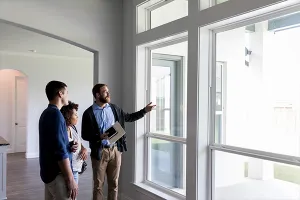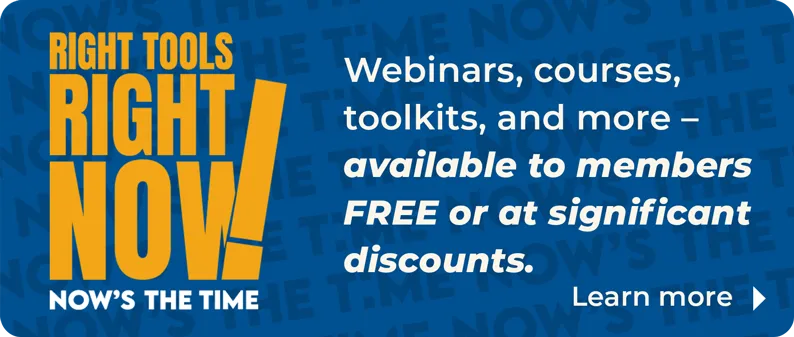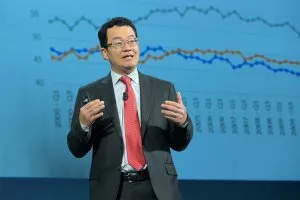By Bobby L. Hickman
When the Chittenden County Regional Planning Commission in Burlington, Vt., started working on a regional economic development plan a couple of years ago, they surveyed more than 200 employers to identify their top challenges. While the main concern was finding workers with the right technical skills, the second issue was affordable housing.
“Our housing market is fairly expensive relative to our salaries,” said Charlie Baker, executive director of the commission. “We don’t have enough affordable housing in our area, which affects our ability to have a healthy economy.”
Baker said some companies recruited out-of-state workers who turned down new jobs because they were unable to find suitable housing. Now leaders are crafting messages to get the business community more involved in actively supporting new developments.
The Chittenden County experience is far from unique. More working families across the country report difficulty finding housing that fits their budget. The logical and statistical facts supporting affordable housing are wellknown, including economic growth, educational progress, and better family lives. But often efforts to increase the housing supply encounter political apathy or neighborhood opponents who theoretically support the concept — just “Not in My Backyard.”
Addressing those challenges requires simple, focused messages that convey the benefits of affording housing.
Several key factors go into developing those messages, including identifying the audiences; setting specific goals; and deciding which media platforms to use. Volunteers and staff also need training on delivering that messaging.
“When it comes to talking about affordable housing in general, we remind people that our minds are not blank slates,” said Amy Clark, director of marketing and communications for the National Housing Conference (NHC). “We all absorb new information and filter it through our own experiences, things we hear from others — through ‘frames’. The reality is that the frames you may have supporting affordable housing are not the same as frames of your audience. It is important to recognize that and frame communications accordingly.”
Clark said a good way to trigger positive frames is to focus on universal values — such as opportunity, safety and security that affordable housing provides to families, communities and neighborhoods. Emphasizing values provides “a better chance of connecting with people regardless of what frames they bring.”
Another suggestion is avoiding “other-izing” — making the conversation on affordable housing about helping “those other people.”
She explained, “We talk about building homes for seniors or the working poor. They may be on a fixed income, but that’s not necessarily how they see themselves. If you’re developing and managing affordable housing, you’re creating a community, and that’s an asset to everyone.”
BRIDGE Housing, a nonprofit developer, owner and manager of affordable housing for working families based in San Francisco, must frame its message for a variety of audiences, said Lyn Hikida, vice president of communications. Its audiences include government officials at all levels; architects and general contractors; financial backers; and “neighbors: people who live in the communities where we operate.”
Hikida noted sometimes “there is a stigma associated with affordable housing” that leads residents to oppose a new project proposed for their neighborhood. “In some communities there are fears where people don’t like the idea of low-income people moving in.”
Focus on universal values — such as opportunity, safety and security that affordable housing provides to families.
One strategy in those situations is to “get in early and engage the communities” with facts, Hikida noted. “We help them understand our residents are people like they would find in any other apartment building. In many cases, these people already live and work in those neighborhoods.”
When there is opposition, Hikida added, “It’s really important to listen to what the critics say, and then decide how to respond. We want to hear what they’re worried about before we tell them what we’re going to do. That’s the only way it will resonate with them.”
Being among the first to communicate the need for housing affordability was a key factor in the “Affordable=Achievable” campaign by the Fort Collins, Colo., Board of REALTORS®. Clint Skutchan, CEO and director of REALTOR® & Consumer Advocacy, said, “We believe it is better to be one of the first to start this conversation, rather than reacting to other events.”
The pro-active effort began four years ago, growing out of a “Protecting Our Housing Future” campaign. “The fact that we were talking about this years before the general population noticed [the issue] gives us tremendous credibility,” Skutchan added. “We can help lead the larger conversation, rather than simply us saying ‘no’ to this regulation or that proposal.”
Skutchan continued, “Our messaging began with the idea that we wanted to talk about more than just affordable housing.” Affordable=Achievable focuses on median wage earners “who are getting priced out of our market, as is also happening in other markets across the country.”
He noted the needs of homeless and low-income groups are addressed by “a lot of great nonprofits” in northern Colorado, so his members decided to focus on wage earners who were having trouble affording homes.
“Not everyone’s client can buy a $1-million-plus home,” Skutchan continued. “Our general membership wants to make sure they have access to a diverse base of clients who can purchase homes here. So we’re broadening the scope of ‘affordable housing’ to look at other ideas of what ‘housing affordability’ really means. By advocating for housing availability, we can also advocate for more housing that offsets the cost increases in the current market.”
In Washington, D.C., the “Housing for All” campaign drives the affordable housing message from the Coalition for Nonprofit Housing and Economic Development (CNHED). Ginger Rumpf, director of development and communications, said CNHED is a coalition of 140 organizations “that fund, finance and produce affordable housing.”
Residents of affordable housing developments also play leadership roles in the campaign and message development. Housing for All, which began in 2010, recently achieved its top priority: a commitment from elected municipal officials to provide $100 million annually for the Housing Production Trust Fund. The fund is “the primary method of increasing and preserving housing in the D.C. area,” Rumpf noted.
A critical part of the CNHED strategy is having residents share their stories about “how dollars for these programs make a difference in people’s lives. We use residents’ personal stories to show their connection to affordable housing.”
Messaging through personal stories is considered one of the most effective ways to engage officials and the general public — particularly when trying to communicate statistics and complex facts that could become overwhelming.
“Data is important to back up our claims and show the impact of affordable housing on community life,” noted Clark. However, “When you use numbers and statistics without a narrative, they can easily slip by people. Research shows that people are more likely to remember data if it’s woven into a story.”
Stories can also help combat confirmation basis: the tendency for people to take raw data and use it to prove what they already believe.
Hikida said BRIDGE uses statistics and “lots of stories.” It has an online storytelling platform named BRIDGEtown that can be accessed online or through a mobile app. “It’s a great tool for affordable housing. You can meet some of the people who live there: low-income seniors on Social Security, or people working two jobs.”
One frequently-used resource is a four-minute video interviewing a neighbor who had unsuccessfully fought a BRIDGE development 20 years ago. “Now he’s a happy neighbor who is a big fan of ours. Stories like that — where somebody like that shares their experience — can be powerful.”
The platforms used for communicating the affordable housing message range from traditional print media (advertisements, brochures, and flyers) to digital and social media. Rumpf noted CNHED uses email campaigns where residents contact their elected officials. The Affordable=Achievable campaign in Fort Collins includes a dedicated website, a distinct logo and various social media initiatives.
“Which media platforms are most effective depends on your purpose and your capacity,” Clark noted. “Lots of people have good luck with Facebook.”
Twitter is “a great place to get a message across — headline-type information — but a harder place to build a community.” Blogs can also be effective.
Hikida said the choice of platform varies on a case-by-case basis. She said BRIDGE relies on outlets such as Twitter, LinkedIn and Facebook as “mostly places for positive messaging.” The organization has a robust web presence, and sometimes builds specific sites for a specific development “to help us get accurate information out there.”
BRIDGE often shares its brochure called “Neighbors” and a California government publication, “Myths & Facts About Affordable and High Density Housing.”
While the delivery platform may vary, the outlets need to deliver a consistent message. Skutchan said the Affordable=Achievable campaign constructed its messaging “in a way that resonates with both members and the general public. We didn’t want to be viewed as just a trade association. We wanted to be the voice of housing — not just for our members but for the community as well. ”
Messaging Tips
Using the right words is the heart of effective messaging. For example, research by the NATIONAL ASSOCIATION OF REALTORS® found that simply using the term “housing that is affordable” received more positive responses than the traditional term “affordable housing.”
Other suggestions by housing advocates and communication experts include:
- Keep it positive, even in the face of opposition.
- Tailor your message to your audience.
- Stress the importance for everyone to have the opportunity to live in a safe, affordable home — working families, seniors, all members of the community.
- Avoid getting into “us versus them” scenarios by focusing your message on the benefits for everyone in the community.
- Use personal stories rather than statistics to make the issue more relatable.
- Point out the community benefits: economic growth, more workers and customers for businesses, better educational outcomes for children.
- Connect around universal values: health, security, safety, fairness, opportunity for all.
- Train volunteers and staff on how to deliver your message.
- Spread the word on any platforms where you are comfortable: websites, brochures, social media guru, videos, email campaigns, etc. The more opportunities you provide to engage your audience, the better your chances for success.
Links to Effective Affordable Housing Campaigns and Tools:
Washington Low Income Housing Alliance
Bobby L. Hickman is a freelance business journalist based in Atlanta.








